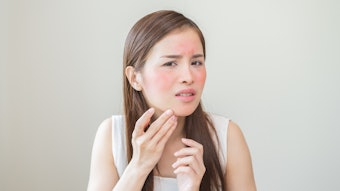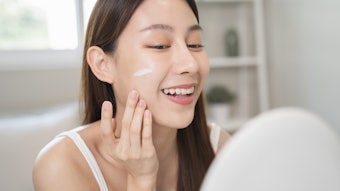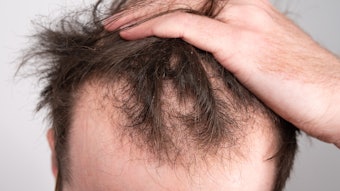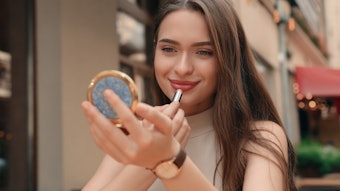It is often claimed that Asian skin is different from Black or Caucasian skin. This claim is so persistent throughout Asia, particularly East Asia, that it leads one to think there must be a physiological basis for it. Reviews such as the keynote presentation by Tony Rawlings at the 2005 IFSCC Conference1 provide a good overview of potential differences, but before discussing these, it would be beneficial to compare human skin with animal skin first.
Pig (ear) skin is generally believed to be the best model for human skin2 since its skin penetration characteristics and many other physiological parameters are roughly the same, or at least not very different. Table 1 lists some of these physiological characteristics; based on this work, the authors concluded that “the results obtained (on pig ear skin) are similar to those of human skin, indicating the suitability of this porcine tissue as a model for human skin.”
Of course, skin is more than a series of external observations. As shown in Figure 1, the skin lipid composition (qualitative and quantitative) and its packing are important for optimal barrier function.3 Early work by Bouwstra et al. has indicated that pig skin exhibits liquid and hexagonal packing,4 yet the orthorhombic stratum corneum (SC) lipid packing phase has been identified as being critical to human skin barrier function.5 Nevertheless the barrier function of the two has been described as quite similar. In a review, Barbero and Frasch found that when the in vitro permeability of pig and human skin were compared, the correlation coefficient r was 0.88 (p < 0.0001) for the 41 compounds studied.6 They also found that the coefficient of variation of skin permeability (i.e., standard deviation divided by the average) was 21% for pig and 35% for human skin.
Within human subjects, percutaneous absorption studies of different racial skin types have also been conducted. These studies require many subjects to be statistically significant due to the high coefficient of variation in the permeability of human skin. In addition, different chemicals penetrate skin via different routes. Therefore, another way to characterize skin barrier function is to measure transepidermal water loss (TEWL) but this is not exactly the same. Percutaneous absorption relates to the outside-in barrier and applies to all chemicals, whereas the TEWL relates to the inside-out barrier and applies only to water. A third approach is to examine differences in clinical effects of the same application among different races; for instance, after applying an irritant. In the present paper, the author addresses these three possible methods to identify the existence of racial influences on human barrier function.
Race and Percutaneous Absorption
The subject of race and percutaneous absorption was popular in the 1980s but few papers have since emerged in the scientific literature. It is also highly unusual that most investigations of this aspect of skin penetration were performed in vivo. The oldest reference relating to this subject is from December 1978, when the percutaneous penetration of tritium-labeled diflorasone diacetate was examined in three Black and three Caucasian subjects. In the end, no marked differences were found.7
Andersen and Maibach8 noted one older reference, the only in vitro instance this author has found, which stated, “Stoughton9 found a greater permeation in vitro through normal appearing white skin than black skin of amputated legs.” This was the first indication that Black skin could have a more effective skin barrier than white skin but Asian skin was not included in this comparison. The same conclusion was made by Wedig and Maibach, who observed 34% less absorption of 14C-labeled dipyrithione through Black skin. This difference was independent of the site of application (forearm, forehead, scalp, etc.) and formulation (methanol vehicle, cream, shampoo, etc.) but disappeared when the skin was stripped, suggesting the difference was caused by the SC.10
Claire Lotte and colleagues investigated the racial differences of percutaneous absorption of organic compounds in vivo, concluding that no statistical differences in penetration could be found among Asian, Black and Caucasian skin.11 14C-labeled benzoic acid, caffeine and acetyl salicylic acid were used to chemically detect skin penetration via two different methods—the skin-stripping method, developed by André Rougier and colleagues,12 and the urinary excretion method. The results were remarkably similar (see Figure 2). No statistical difference was found in the percutaneous absorption of these chemicals between Asian, Black and Caucasian subjects (p > 0.05).
The conclusion one can draw from the in vivo experiments, where skin penetration was measured directly via chemical determination of the penetrant, is that Black skin seems to have a somewhat stronger barrier function than Caucasian skin. Such information for Asian skin is limited but since it is limited, this suggests that its barrier properties are similar to those of the other races.
Race and Barrier Integrity
Another way to investigate whether race affects percutaneous absorption is to assess TEWL. This water loss is inversely proportional to the quality of the skin barrier.13 Since Asian skin has been suggested, albeit not consistently, to be more sensitive than the skin of other races,14, 15 an increase in TEWL would imply that reduced skin barrier function in Asian skin is the underlying cause of this increased reactivity. However, if the TEWL values between races are the same, the reason for this increased skin sensitivity in Asian skin is likely to be internal (i.e., physiological and/or biochemical).
Berardesca and Maibach16 were among the first to investigate TEWL values in Black and Caucasian skin. For untreated skin, they found higher basal TEWL values for Black skin but this difference was not statistically significant. Interestingly, Black skin was also found to be more hydrated than Caucasian skin but again this difference was not statistically significant. It is important to note, however, that higher water levels in Black skin also could explain the higher TEWL values.16 Wilson et al.17 evaluated TEWL in vitro to circumvent the large inter-individual variability that characterizes this parameter, which is strongly influenced by environmental effects and eccrine gland activity, i.e., sweating. TEWL was measured as a function of skin temperature and it was concluded that TEWL in Black skin was higher than in Caucasian skin (see Figure 3).17 Yet in a later in vivo TEWL study, Berardesca et al.18 found no difference in TEWL values. It is remarkable that Asian skin was rarely investigated in the 1980s but this situation drastically changed in the 1990s. Kompaore et al.19 found the TEWL of Blacks and Asians to be 1.3-fold higher than that of Caucasians, whereas Sugino et al.20 assessed baseline TEWL measurements to decrease in the order of: Afro-Americans > Caucasians ≥ Hispano-Americans ≥ Asians.
Work by Reed et al.21 shed new light on this stream of contradictory results when darkly pigmented skin was shown to exhibit a more resistant barrier that recovers sooner after perturbation by tape-stripping than lighter pigmented skin. Some of this data is shown in Table 2 and Figure 4 and illustrates that the basal TEWL values and integrity of Asian and Caucasian skin are roughly the same (expressed as the number of tape strips required to increase TEWL values to 20 g.m-2.h-1). The researchers concluded that it is not the race or gender of the subject but the skin’s capability to withstand environmental or occupational insults—and this capability is reflected in the skin type of the subject. Individuals with skin type V/VI, for example, required more tape strips to elevate the TEWL to a certain level but also required less time for the barrier to recover.21
In another study, published by Warrier et al., the opposite of all other findings was reported. TEWL was found to be significantly lower on the cheeks and legs of Black skin compared to Caucasian skin.22 Two more studies were performed. One by Berardesca et al.23 found significantly increased TEWL in Black skin after three (p < 0.05) and six (p < 0.03) tape strippings. This is remarkable since it is the opposite of what Reed et al. had found,22 despite the fact the two groups used a similar methodology. The last paper investigating TEWL was that of Aramaki et al.24 who found a significantly lower TEWL value in Japanese skin (6.3 g.m-2.h-1) relative to German skin (7.6 g.m-2.h-1).
Wesley and Maibach25 summarized all these studies nicely when they stated, “All of the evidence supports [that] TEWL in Black [skin] is greater than in Caucasian [skin] except for Berardesca et al.18 who found no significant difference, and Warrier et al.22 who found the TEWL of Black [skin] to be smaller than that of Caucasian [skin]. TEWL measurements on Asian skin are inconclusive as they have been found to be equal to Black skin and greater than Caucasian skin (Kompaore et al.19; Aramaki et al.24) and less than all other ethnic groups (Sugino et al.20).”
Perhaps one must then look at the clinical effect of topically applied chemicals in the various races to gain a clearer answer to the question of whether Asian skin is really different from the other races, particularly in terms of sensitivity.
Race and Clinical Efficacy of Topical Formulas
This article focuses on assessing whether Asian skin is more sensitive than the skin of other races. Therefore, in this section, clinical efficacy should be interpreted in the broadest sense of the term. Most efficacies measured in this section are not efficacies in the cosmetic sense; they include vasodilatation (caused by the delivery of nicotinate esters) or skin sensitivity (caused by the delivery of lactic acid).
Since the topical application of nicotinate esters results in increased blood flow with a rapid onset that is transient in nature, this method has become popular to study the effects of vehicles and other effects such as hydration on the delivery of these vasodilators.26 This technique gained in popularity with the advent of laser-Doppler velocimetry (LDV) and photoplethysmography (PPG). In short, with these techniques, one measures the onset of increased blood flow, the total area under the curve (of blood flow as a function of time), and the time to reach maximal response and to decay to 75% of the maximum value. (See Reference 25 for a more detailed discussion of these techniques.)
The first study was performed by Guy et al.27 who used methyl nicotinate as the vasodilator. Two groups of young subjects (20-30 years old) were compared, one group having Black skin (n = 10), the other group having Caucasian skin (n = 9). Analysis of the results showed statistically indistinguishable similarities between the time to peak response, the area under the response-time curve, and the time for the response to decay to 75% of its maximal value (p = 0.05).
A second study, performed by Berardesca and Maibach16 to determine the difference in irritation between young Black and Caucasian skin, compared 0.5% and 2.0% sodium lauryl sulfate to untreated, pre-occluded and pre-lipidized skin. No significant differences between Black and Caucasian skin were noted by LDV at baseline or after application of sodium lauryl sulfate.
The third study, also by Berardesca and Maibach,28 was different in set-up from the previous one, as this time, a corticosteroid vasoconstrictor was used on eight subjects with Caucasian skin and six with Black skin. Different responses were recorded in the Black subjects after the vasoconstrictive stimulus compared with Caucasian subjects—namely a decreased area under the response curve (p < 0.04), a decreased peak response (p < 0.01), and a decreased decay slope after peak blood flow (p < 0.04).
In a fourth study, performed by Gean et al.,29 the researchers measured the response of human skin to topical methyl nicotinate in Asians, Blacks and Caucasians. It was found that the area under the response curve for LDV was greater for Black skin than for Caucasian skin for all methyl nicotinate concentrations (p < 0.05). For the higher concentrations of methyl nicotinate, the area under the response curve was larger for Asians than for Caucasians (p < 0.05). However, the maximum response was not affected.
A fifth study was performed by Kompaore and Tsurata,30 who studied four different vasodilators (methyl nicotinate, ethyl nicotinate, hexyl nicotinate and vitamin E) for their onset of action before and after stripping the SC. Tape stripping should of course reduce the lag-time, but the researchers wondered whether the reduction is of the same order of magnitude in the different races. Their data is shown Table 3 and reveals that, for untreated skin, the barrier function in Black skin > Caucasian skin (p < 0.05) > Asian skin (p < 0.01), where the number in parentheses is the level of significance relative to Black skin. After stripping, the skin’s barrier function was significantly reduced in all three races (p < 0.01). The sequence of barrier strength remained the same but the barrier function was reduced much more in Asian skin than in Caucasian skin or Black skin in terms of percent. As with the TEWL observations illustrated above, this suggests it is not the barrier itself that should be examined but rather the skin’s capability to cope with perturbations to the barrier.
Discussion
After reading the discussion of these papers, one may wonder whether there really is a difference in sensitivity of Asian skin (particularly East Asian skin) towards external stimuli and if so, how this could be. One study by Aramaki et al.24 investigated just that. Researchers performed a stinging assay with 10% lactic acid on a group of Japanese and German women and asked for their perceptions after 2, 4 and 5 min. The results shown in Figure 5 reveal that the stinging was reported as being much more intense in the Japanese group and this was not only a matter of enhanced perception since Chromameter Δa*-values indicated the same (see Figure 6). This realization re-asserts that it is not the values of the untreated skin but the values obtained after this skin is stressed or damaged that determine skin sensitivity.
One of the reasons that cosmetic scientists have failed to explain the increased sensitivity of Asian skin, particularly Japanese skin, is, in this author’s mind, the fact that the route of penetration into the skin has not been taken into account. The unperturbed Asian skin barrier functions well and its TEWL is low but when this barrier is perturbed, it is relatively badly affected. As a consequence, its TEWL goes up dramatically, as shown by Kompaore et al.30 However, stinging is something very different. The stinging caused by lactic acid is an immediate effect; after all, it was judged within minutes of application. Therefore, this penetration must be via shunt routes and not via the SC. Of the two shunt routes into skin—i.e., the infundibulum around the hair follicle and the sweat duct—based on polarity, it must be the latter via where the lactic acid penetrates and none of the articles discussed considered the route of penetration.
This leads to the question: Does Asian skin indeed have more or bigger pores? Unpublished data from Alain Khaiat suggests that this indeed is the case. In fact, research to improve the appearance of conspicuous pores is more prominent in Asia than anywhere else in the world,31 suggesting Asian pores are also bigger. In KOSMET, the IFSCC’s cosmetic science database, there are 10 articles that discuss conspicuous pores, all of which are from Japan and all from the last decade. In addition, according to the Internet, equipment exists with which the Japanese can specifically clear their pores. These devices could enhance pore penetration and thus sensitivity.
What can cosmetic formulators do to overcome this pore penetration to reduce the skin sensitivity of Japanese clientele? The co-application of polymers to block pores, strontium salts to make pores contract, or local anesthetics to reduce the perceived stinging could ease discomfort and reduce skin penetration. In addition, indirectly, photoprotective agents such as UV filters could help—after all, a darker skin type creates a stronger barrier because pigmentation reduces skin inflammation,21 and proper sun care does helps to reduce inflammation and other environmental perturbations. How this fits with Asians’ desire to use skin whiteners is a completely different discussion.
References
Send e-mail to [email protected].
- AV Rawlings, Ethnic skin types: Are there differences in skin structure and function? Int J Cosmet Sci 28 79-93 (2006)
- U Jacobi et al, Porcine ear skin: An in vitro model for human skin, Skin Res & Technol 13 19-24 (2007)
- JA Bouwstra, GS Gooris, and M Ponec, Skin lipid organization, composition and barrier function, IFSCC Mag 7 297-307 (2007)
- JA Bouwstra, GS Gooris, W Bras and DT Downing, Lipid organization in pig stratum corneum, J Lipid Res 36 685-695 (1995)
- GSK Pilgram et al, Aberrant lipid organization in stratum corneum of patients with atopic dermatitis and lamellar ichthyosis, J Invest Dermatol 117 710-717 (2001)
- AM Barbero and HF Frasch, Pig and guinea pig skin as surrogates for human in vitro skin penetration studies: A quantitative review, Toxicol In Vitro 23 1-13 (2009)
- AJ Wickrema Sinha, SR Shaw and DJ Weber, Percutaneous absorption and excretion of tritium-labeled diflorasone diacetate, a new topical corticosteroid in the rat, monkey and man, J Invest Dermatol 71 372-378 (1978)
- KE Andersen and HI Maibach, Black and white human skin differences, J Am Acad Dermatol 1 276-282 (1978)
- RB Stoughton, in: Pharmacology of the Skin, W Montagna, RB Stoughton and EJ Van Scott, eds., Appleton-Century-Crofts: New York (1969) p 542
- JH Wedig and HI Maibach, Percutaneous penetration of dipyrithione in man: Effect of skin color (race), J Am Acad Dermatol 5 433-438 (1981)
- C Lotte, RC Wester, A Rougier and HI Maibach, Racial differences in the in vivo percutaneous absorption of some organic compounds: A comparison between black, caucasian and Asian subjects, Arch Dermatol Res 284 456-459 (1993)
- A Rougier, D Dupuis, C Lotte, R Roguet and H Schaefer, In vivo correlation between stratum corneum reservoir function and percutaneous absorption, J Invest Dermatol 81 275-278 (1983)
- A Rougier, C Lotte and HI Maibach, In vivo relationship between percutaneous absorption and transepidermal water loss, in: Percutaneous Absorption, Drugs—Cosmetics—Mechanisms—Methodology, 3rd ed, RL Bronaugh and HI Maibach, eds., Marcel Dekker: New York ch 6 (1999) pp 117-132
- MK Robinson, Racial differences in acute and cumulative skin irritation responses between Caucasian and Asian populations, Contact Dermatitis 42 134-143 (2002)
- MK Robinson, MA Perkins and DA Basketter, Application of a 4-H human patch test method for comparative and investigative assessment of skin irritation, Contact Dermatitis 38 194-202 (1998)
- E Berardesca and HI Maibach, Racial differences in sodium lauryl sulphate induced cutaneous irritation: Black and white, Contact Dermatitis 18 65-70 (1988)
- D Wilson, E Berardesca and HI Maibach, In vitro transepidermal water loss: Differences between black and white human skin, Br J Dermatol 119 647-652 (1988)
- E Berardesca, J de Rigal, J-L Lévêque and HI Maibach, In vivo biophysical characterization of skin physiological differences in races, Dermatology 182 89-93 (1991)
- F Kompaore, JP Marty and C Dupont, In vivo evaluation of the stratum corneum barrier function in blacks, caucasians and Asians with two noninvasive methods, Skin Pharmacol 6 200-207 (1993)
- K Sugino, G Imokawa and HI Maibach, Ethnic difference of stratum corneum lipid in relation to stratum corneum function, J Invest Dermatol 100 587 (1993)
- JT Reed, R Ghadially and PM Elias, Skin type, but neither race nor gender, influence epidermal permeability barrier function, Arch Dermatol 131 1134-1138 (1995)
- AG Warrier, AM Kligman, RA Harper, J Bowman and RR Wickett, A comparison of black and white skin using noninvasive methods, J Soc Cosmet Chem 47 229-240 (1996)
- E Berardesca, F Pirot, M Singh and HI Maibach, Differences in stratum corneum pH gradient when comparing white caucasian and black African-American skin, Br J Dermatol 139 855-857 (1998)
- J Aramaki, S Kawana, I Effendy, R Happle and H Löffler, Differences of skin irritation between Japanese and European women, Br J Dermatol 146 1052-1056 (2002)
- N Wesley and HI Maibach, Racial (ethnic) differences in skin properties, the objective data, Am J Clin Dermatol 4 843-860 (2003)
- KS Ryatt, M Mobayen, JM Stevenson, HI Maibach and RH Guy, Methodology to measure the transient effect of occlusion on skin penetration and stratum corneum hydration in vivo, Br J Dermatol 119 307-312 (1988)
- RH Guy, E Tur, S Bjerke and HI Maibach, Are there age and racial differences to methyl nicotinate-induced vasodilatation in human skin? J Am Acad Dermatol 12 1001-1006 (1985)
- E Berardesca and HI Maibach, Cutaneous reactive hyperaemia: Racial differences induced by corticoid application, Br J Dermatol 120 787-794 (1989)
- CJ Gean, E Tur, HI Maibach and RH Guy, Cutaneous responses to topical methyl nicotinate in black, oriental and caucasian subjects, Arch Dermatol Res 281 95-98 (1989)
- F Kompaore and H Tsurata, In vivo differences between Asian, black and white in the stratum corneum barrier function, Int Arch Occup Environ Health 65 S223-S225 (1993)
- T Iida, Y Katsuta, K Hasegawa, M Denda and S Inomata, Can we improve the appearance of conspicuous facial pores?, poster at the 24th IFSCC Congress in Osaka, Japan (Oct 2006)













